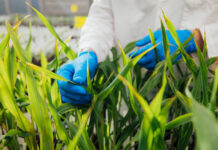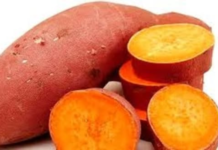Post-harvest crop losses continue to pose a major challenge for African rural farmers. A successful harvest can quickly turn into a financial setback without proper storage. Poor ventilation, high humidity and pest infestations often lead to significant spoilage, which cuts into household income and reduces the food supply for communities that rely on these crops.
Fortunately, a new generation of sustainable storage technologies offers practical, cost-effective solutions for rural environments. From hermetic bags to zero-energy cooling changers, these innovations help smallholder farmers extend shelf life and secure higher market value for their produce.
What Causes Post-Harvest Losses in Rural Areas?
Across rural Africa, post-harvest losses are driven by a mix of persistent threats. These include pests, excess moisture, mold, poor ventilation and rodents, which play a role in crop spoilage. These issues hurt individual farmers and have national consequences, with African countries losing millions of dollars’ worth of crops each year before they reach the market.
Limited infrastructure, high humidity and unreliable cold storage worsen the problem in many rural areas. Farmers often rely on basic sacks or open-air methods that expose harvests to environmental damage. Understanding these common pain points allows farmers to decide which storage technologies offer the most protection and long-term benefit for their conditions.
Technologies That Make a Difference
Choosing the right storage solution goes beyond picking the most advanced or expensive option. Even high-end equipment can suffer unplanned downtime if it’s installed in cramped, hot or poorly ventilated spaces, which are common in many rural settings. Farmers need tools that match their crops and environment to get the most out of any post-harvest technology.
Hermetic Storage Bags and Metal Silos
Hermetic storage technologies offer a simple yet powerful solution for smallholder farmers looking to protect their harvest without relying on chemicals. By creating an airtight, oxygen-limiting environment, these bags and metal silos naturally kill off insects and pests that typically ruin stored grains. This method preserves the nutritional value and quality of crops like maize, cowpeas and millet. It reduces the risk of contamination from mold and aflatoxins.
Because hermetic storage options are affordable, easy to use and scalable through cooperatives, they’ve quickly become a go-to solution for farmers across rural Africa. With proper training and handling — like ensuring crops are fully dried before sealing — these tools can significantly cut post-harvest losses. They can help farmers store their harvest safely for longer periods, even in high-humidity environments.
Zero-Energy Cool Chambers
Zero-energy cool chambers are a smart, low-cost solution for storing perishable crops without electricity, which makes them ideal for hot, off-grid rural areas. These chambers use evaporative cooling to create a consistently cool and humid environment that dramatically slows down spoilage in fruits and vegetables.
Built from locally available materials like bricks, sand and wood, the structure allows water to evaporate through the sand-filled walls, reducing the internal temperature. This setup can extend the shelf life of common produce like tomatoes, leafy greens, mangoes and peppers. By maintaining a stable microclimate, zero-energy coolers help farmers reduce waste, sell their goods at better prices and keep more food on the table without increasing energy costs or requiring complicated machinery.
Basic Sensors and Mobile Monitoring
Simple temperature and humidity sensors give rural farmers a smarter way to manage storage and reduce post-harvest losses. These compact devices provide early alerts when conditions shift, which allows farmers to act quickly before spoilage.
One promising innovation is triboelectric nanogenerators, which power humidity sensors without external electricity. These self-powered sensors offer a low-maintenance solution for tracking humidity levels in storage spaces, and they’re increasingly used across farm-level storage and food processing environments.
When paired with SMS alerts or integrated into farm management apps, farmers can monitor conditions in real time and make fast decisions to protect their crops. These monitoring tools help prevent mold growth and preserve more of the harvest without requiring complex systems or high upfront costs.
Pre-Harvest Practices That Improve Post-Harvest Results
Crop rotation is influential in strengthening the long-term health of soil and crops. Alternating the types of crops grown in a field each season reduces the buildup of pests and soil-borne diseases that often thrive in monoculture environments.
This naturally lowers the need for synthetic fertilizers and chemical insecticides, as healthier soil leads to more resilient plants. Robust crops withstand environmental stress better, have a longer shelf life and store more effectively. For farmers focused on minimizing post-harvest spoilage, improving pre-harvest conditions through crop rotation is a sustainable move that pays off beyond the field.
Tips for Successful Implementation
Successfully adopting post-harvest storage technologies involves considering how that equipment is used, maintained and integrated into the farming routine. Farmers who plan carefully, seek support and stay consistent with best practices often see the biggest return on investment. Here are several practical tips to help ensure long-term success:
- Start small and scale up: Begin with one or two storage improvements and expand gradually based on results and available resources.
- Prioritize proper drying before storage: Ensure crops are fully dried to safe moisture levels to prevent mold growth, especially when using hermetic bags or silos.
- Choose technology suited to your climate and crops: Match solutions to your local environment, such as evaporative cooling for perishables or sealed storage for grains.
- Train users on handling and maintenance: Involve all household or cooperative members in training to ensure proper use and upkeep of the equipment.
- Inspect storage regularly: Check for damage, leaks or rising humidity levels to catch problems early.
Financing and Support Options for Smallholders
Access to financing and support can make or break a farmer’s ability to invest in better post-harvest storage, especially in rural areas with limited resources. One important avenue is government-backed extension programs, many offering free training, subsidies or low-interest support for storage-related improvements.
Under the Malabo Declaration, African leaders committed to allocating at least 10% of public expenditures to agriculture. This can allow farmers to tap into national funding streams to boost productivity and reduce losses. In addition to public programs, microfinance institutions and rural banks often provide small loans or credit tailored to agricultural cycles, which makes it easier to fund solutions like solar dryers.
Why Small Storage Improvements Make a Big Impact
Post-harvest losses don’t have to be part of the farming routine. By choosing one smart, practical storage solution and applying it consistently, farmers can see real improvements in crop quality and income. Even minor upgrades can make a big difference in food security and long-term sustainability.









